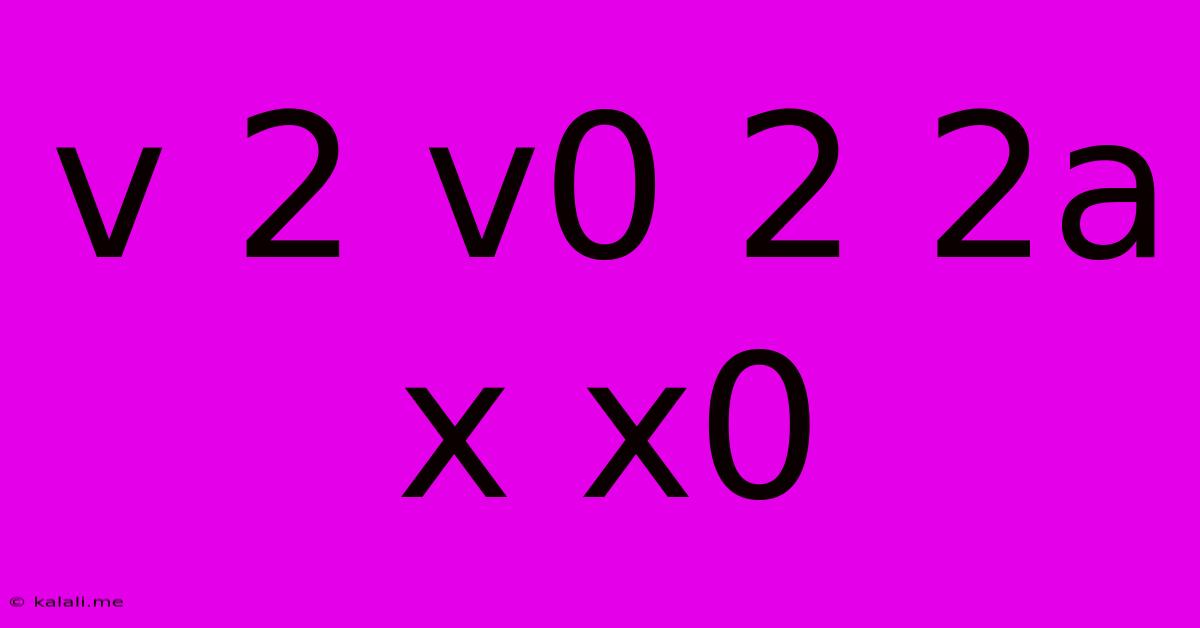V 2 V0 2 2a X X0
Kalali
Jun 02, 2025 · 3 min read

Table of Contents
Understanding V2V, V2I, and Related Communication Protocols: A Deep Dive into Connected Vehicle Technology
This article delves into the intricacies of Vehicle-to-Vehicle (V2V) communication, its cousin Vehicle-to-Infrastructure (V2I), and related protocols like 802.11p and its potential successor, 802.11be. We'll explore the fundamental concepts, explore the significance of V2V, V2I, x, and x0 in the context of these technologies, and discuss the challenges and future directions of this rapidly evolving field. The terms like 2, 2a, V0, aren't standard notations within the context of V2V/V2I protocols but might represent specific versions or implementations; we'll analyze them within the broader context.
What is V2V Communication?
Vehicle-to-Vehicle (V2V) communication is a cornerstone of Intelligent Transportation Systems (ITS). It enables vehicles to exchange real-time data wirelessly, improving road safety and traffic efficiency. This data can include speed, location, heading, braking status, and other crucial information. By sharing this data, vehicles can anticipate potential hazards, such as approaching blind intersections or vehicles suddenly braking, enhancing reaction time and preventing accidents. The efficient exchange of information contributes directly to the overall smoothness of traffic flow.
V2I: The Infrastructure Connection
Vehicle-to-Infrastructure (V2I) communication extends V2V by connecting vehicles to roadside infrastructure, such as traffic lights, sensors, and centralized traffic management systems. This connection allows for sophisticated traffic management strategies. For instance, V2I can provide vehicles with real-time information about traffic congestion, road closures, and optimal routes, leading to reduced congestion and improved travel times. The infrastructure itself becomes a source of information for all connected vehicles within its range.
The Role of 802.11p and Beyond
The IEEE 802.11p standard plays a crucial role in V2V and V2I communication by providing a dedicated short-range wireless communication protocol operating in the 5.9 GHz Dedicated Short Range Communications (DSRC) band. This dedicated band minimizes interference with other wireless technologies, ensuring reliable and consistent communication between vehicles and infrastructure. The next generation 802.11be (Wi-Fi 7) is expected to provide even greater bandwidth and performance, capable of supporting the ever-increasing amount of data exchanged in advanced driver-assistance systems (ADAS) and autonomous driving technologies.
Understanding x and x0 in the Context of V2V/V2I
The variables x and x0 likely represent placeholders for specific parameters within a broader V2V/V2I system or communication protocol. They could denote unique identifiers for vehicles, specific data points being transmitted (such as speed x or location coordinates x0), or versions of specific software components or message formats. Without further context, their precise meaning remains ambiguous. The numbers 2, 2a, V0 are also likely version-specific or model-dependent, possibly referring to specific communication protocols or hardware revisions.
Challenges and Future Directions
Despite its immense potential, V2V and V2I technology faces several challenges:
- Security: Ensuring the security and integrity of the data exchanged is paramount to preventing malicious attacks or manipulation.
- Scalability: Handling the massive amount of data generated by a large number of connected vehicles requires robust and scalable infrastructure.
- Interoperability: Different manufacturers use different communication protocols and data formats, creating interoperability challenges.
- Deployment Cost: Widespread deployment of V2V and V2I technology requires significant investment in infrastructure and vehicle upgrades.
Despite these hurdles, the future of connected vehicle technology is bright. Ongoing research and development are focused on addressing these challenges and realizing the full potential of V2V and V2I for improving road safety, traffic efficiency, and creating a more sustainable transportation system. The development and adoption of 5G and its advancements are further expected to play a pivotal role in boosting the effectiveness of connected vehicles.
Latest Posts
Latest Posts
-
2 Lbs Powdered Sugar Is How Many Cups
Jun 03, 2025
-
How To Find Perimeter Of A Right Triangle
Jun 03, 2025
-
How Do You Make A Speaker Louder
Jun 03, 2025
-
How To Remove A Scratch On Plastic
Jun 03, 2025
-
How To Clean A Stinky Sink Drain
Jun 03, 2025
Related Post
Thank you for visiting our website which covers about V 2 V0 2 2a X X0 . We hope the information provided has been useful to you. Feel free to contact us if you have any questions or need further assistance. See you next time and don't miss to bookmark.